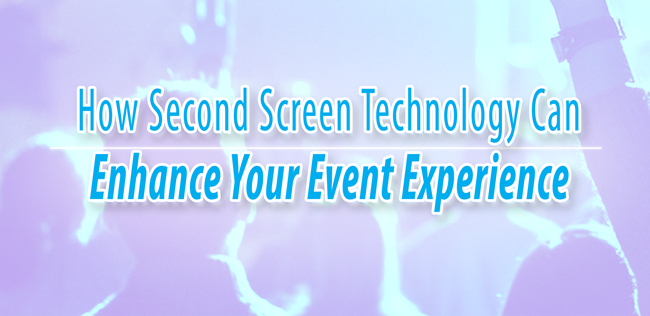Here’s a great article on http://www.pcmaconvene.org by author Michelle Russell, that shows how second screen technology is being used today to enhance the experience of event attendees. The possibilities for applications towards different industries is very exciting.
At the American Society of Landscape Architects’ (ASLA) 2015 Annual Meeting & Expo in Chicago in November, attendees communicated with speakers via instantaneous polling on their devices, synchronized to their presentations. Nearly half of users voted on at least one question posed during the annual meeting — higher participation than ASLA had seen at previous meetings.
In addition to real-time polling and Q&A applications, second-screen technology enhances attendees’ experiences by streaming slides to their devices and enabling them to participate in chat streams that integrate with social media. And the ways in which the technology benefits both attendees and organizers keep evolving.
PSAV also offers a second-screen platform, which has been widely embraced by one of its medical-association clients in particular, said Brent Rogers, PSAV’s vice president of digital services. The association uses the technology at its four meetings a year — from its largest annual meeting of 20,000 attendees to smaller events that focus on recertification, where it’s used for practice exams. “The second-screen application is useful for that,” Rogers said, “because they present images that the doctors use to help make a diagnosis.” The images from the main screen at the front of the room — the first screen — are streamed to individual iPads assigned to physician attendees, so they can see them up close, and pinch and zoom as needed to answer questions.
Second-screen technology’s benefits extend beyond the event itself, because attendees can save everything they’ve worked on during their sessions and email it to themselves. “When you leave the conference, it’s all waiting for you in your inbox,” Rogers said. “You’ve got the slides, you’ve got your notes, you’ve got your test results all right there, and you can continue your education well beyond the meeting space.” Similarly, Freeman sends an email to FXP | touch users with their own “personal website [which has] all of the content they consumed during the show,” Maranville said.
As for organizers, once the event concludes, they have “a rich analytics set” to analyze attendee engagement, said Ken Holsinger, Freeman’s vice president of digital solutions. Added Maranville: “A lot of companies are talking about data. This provides data to judge how the session went, how the presenter did, and there’s a lot of under-the-covers data that we can use as well, that’s tied to engagement and can help make a better presentation and better event.”
The above is an excerpt from an article by Michelle Russell on http://www.pcmaconvene.org. I encourage you to read her article: 5 Next-Gen Technologies That Already Are Changing Meetings where you can learn about the latest technologies that are changing the way we experience events and meetings today.
